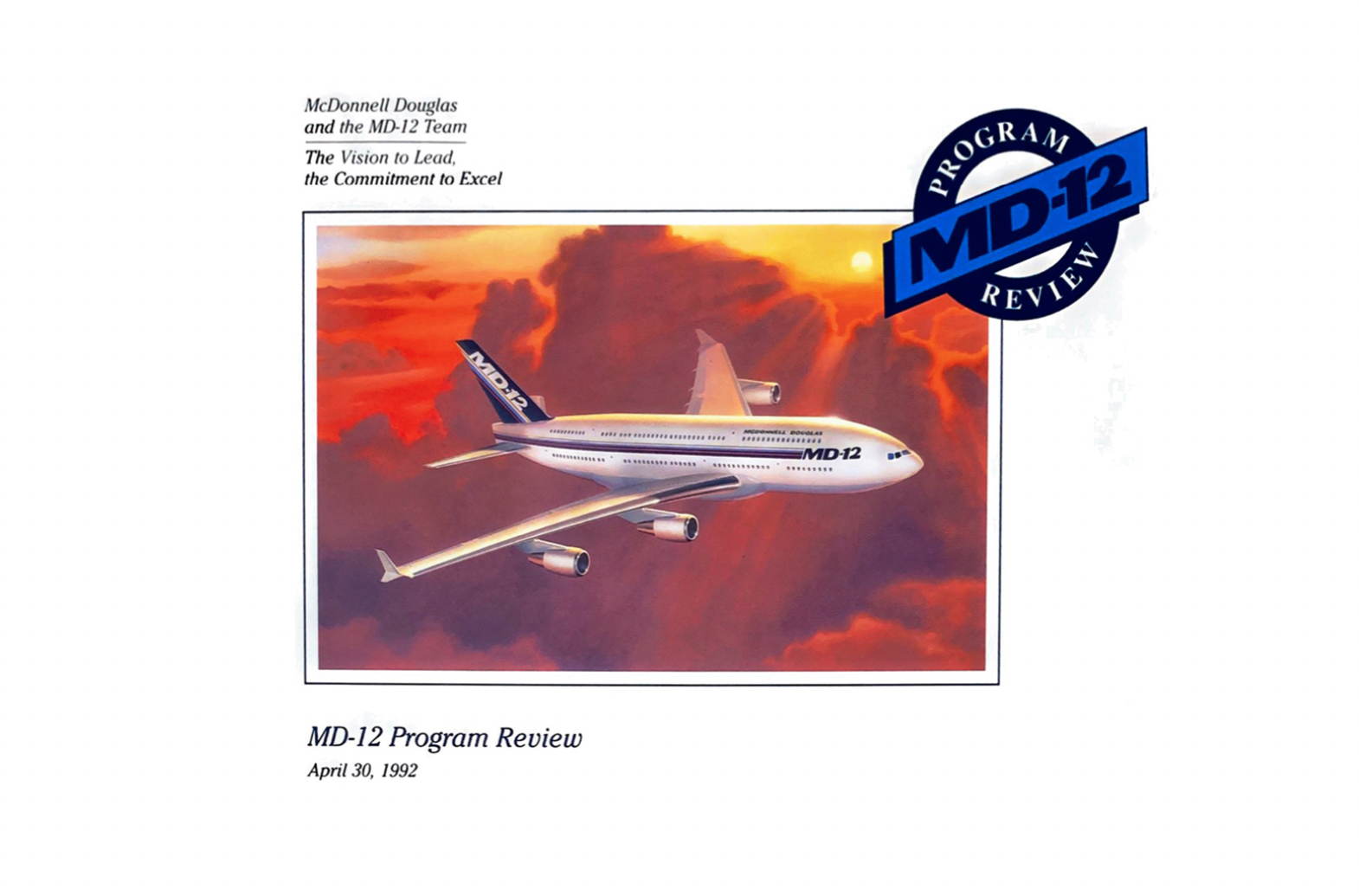Log-in here if you’re already a subscriber
The first in a series on the history and lessons for Airbus and Boeing found in the pages of McDonnell Douglas’s 1992 MD-12 program review.
It was the last big gasp for air of a dying enterprise. Douglas Aircraft Company was trying to save itself from self-inflicted suffocation. McDonnell Douglas’s relentless focus on cost, share price and defense contracts had led to systemic underinvestment on its civilian airliner business. The company hadn’t designed an all-new commercial airplane since the late ’60s, just following the 1967 merger that joined McDonnell and Douglas under one roof.
Instead its phenomenally creative and severely under-resourced staff had been living off of small changes to the DC-9 and DC-10 family for decades. That strategy would ultimately prove to be fatal. Its exit from the market came finally in 1997 with the merger with Boeing. But five years earlier, Douglas was thinking big — really big.
It was Wednesday, April 29, 1992 and the world was changing fast. Just a few months earlier, twin pillars of the 20th century, Pan American World Airways and the Soviet Union, had collapsed within days of each other. At home it was the same day the Los Angeles Riots erupted after four police officers were acquitted in the beating of Rodney King — it tore apart Southern California not far from the company’s commercial headquarters.
Related: Searching for 40-year old lessons for Boeing in the grounding of the DC-10
Inside that headquarters building in Long Beach, Douglas was trying to survive a jump between moving trains; straddling a tightly-controlled world where Boeing’s 747 — the only ultra-long range jet — still ruled the skies and another where big twin-engined aircraft were a quickly-arriving aspiration. Around 20 airlines gathered to see Douglas’s cards on the table. It was the unveiling of the MD-12 — an audacious double-deck American superjumbo.
A quarter century later in 2017 at an estate sale near Seattle, aviators historian and collector Tom Harris unearthed documents that shine a spotlight on what went on at that two-day program review that began 30 years ago today.
The three-inch binder’s 310 pages are a deep look inside the mind of McDonnell Douglas, which was seeking an international partner in Taiwan to shoulder the jet’s development costs and outsource manufacturing. (The same dynamic would repeat itself on the 787.) It’s a rare window into how a new commercial aircraft program comes to life. It’s the picture of a company desperately trying to stay alive and gain the attention of the world’s airlines with something big and bold.
“If we were going to have a future, a product line that could compete, this was our best chance of doing it,” said Walt Orlowski — the one-time chief of the MD-12 program — during a series of interviews with The Air Current for this multi-part series.
McDonnell Douglas’s near-life brush with building the MD-12 superjumbo — and its decision not to go forward — offers a previously-unseen perspective into why the A380 would struggle to succeed and ultimately fail almost 30 years later.
It is a moment that deserves revisiting. While the global pandemic hastened the end of the A380, the dynamics facing the jet’s demise were set in motion during the days of McDonnell Douglas’s initial evaluation of the MD-12 and the dawn of diplomatic agreements that made enormous airplanes an endangered species.
Subscribe to continue reading...Subscribe to Continue Reading
Our award-winning aerospace reporting combines the highest standards of journalism with the level of technical detail and rigor expected by a sophisticated industry audience.
- Exclusive reporting and analysis on the strategy and technology of flying
- Full access to our archive of industry intelligence
- We respect your time; everything we publish earns your attention


